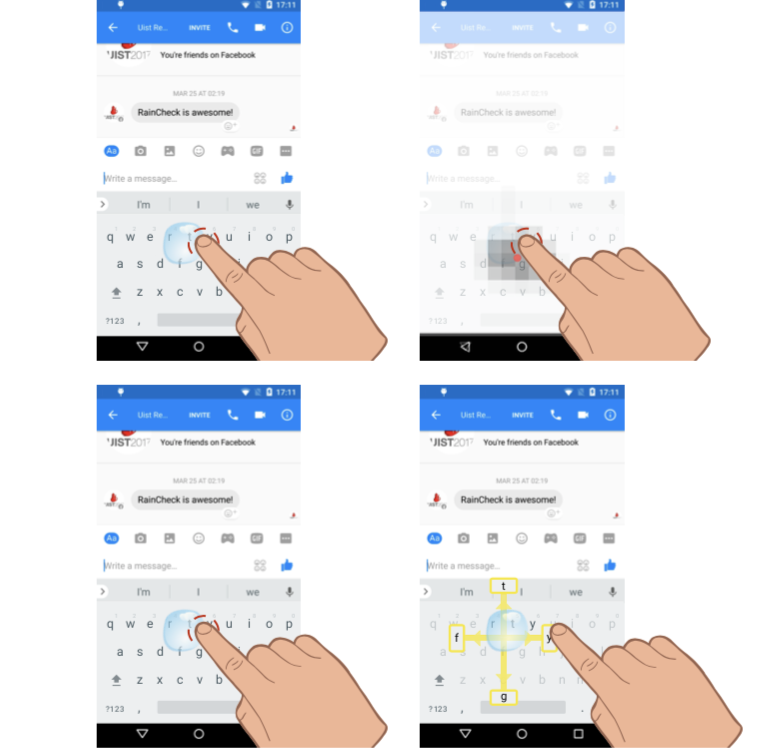RainCheck: Overcoming Capacitive Interference Caused by Rainwater on Smartphones

Modern smartphones are built with capacitive-sensing touchscreens, which can detect anything that is conductive or has a dielectric differential with air. The human finger is an example of such a dielectric, and works wonderfully with such touchscreens. However, touch interactions are disrupted by raindrops, water smear, and wet fingers because capacitive touchscreens cannot distinguish finger touches from other conductive materials. When users' screens get wet, the screen's usability is significantly reduced. RainCheck addresses this hazard by filtering out potential touch points caused by water to differentiate fingertips from raindrops and water smear, adapting in real-time to restore successful interaction to the user. Specifically, RainCheck uses the low-level raw sensor data from touchscreen drivers and employs precise selection techniques to resolve water-fingertip ambiguity. Our study shows that RainCheck improves gesture accuracy by 75.7%, touch accuracy by 47.9%, and target selection time by 80.0%, making it a successful remedy to interference caused by rain and other water.